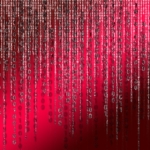With RPA market maturing, UiPath paves the way for enterprise automation opportunities enabled by partners
UiPath’s annual FORWARD conference provides a forum for the company to outline the next phase of its growth aspirations. TBR attended this year’s event, FORWARD 5, alongside 3,500 participants, including representatives from nearly 1,000 partners, and learned about UiPath’s goal to build on its position as a leading vendor in the robotic process automation market — in which it reportedly holds over one-third in market share — to become an automation platform capable of addressing enterprise transformation needs across all lines of business of an organization. To achieve this objective, UiPath’s ecosystem partners, from IT services and consulting firms like EY to cloud platforms like Microsoft, will be crucial. Similar to previous FORWARD events, UiPath reiterated its desire to scale within its existing install base — a number that now exceeds 10,500 global customers — by selling business outcomes.
Turning the corner from a pure play RPA vendor to an enterprisewide automation vendor compels UiPath to stay the course of its portfolio expansion
Three years ago, UiPath saw the opportunity to develop a platform that will help it build the de facto layer that will enable enterprises’ core processes from ERP to HR and finance to identify, gather and manage data with minimal human intervention. Fast-forward to 2022, and UiPath is adding modules to enable its Business Automation Platform (BAP) to meet its goal of departing from being viewed as purely a robotic process automation (RPA) vendor.
Combined with the purchase of the no-code AI communications vendor Re:infer, these elements will enable UiPath to provide support in high-volume communications channels — across email, chats, service desk and CRM notes — augmenting the task mining cycle and providing enterprises with key insights around how business gets done. As UiPath strives to bring together integrated discovery and automation to optimize enterprise processes, BAP provides the layer between enterprises’ processes and employees with three distinct functions enabled by UiPath’s portfolio and organized into three categories: Discover, Automate and Operate.
While the majority of the opportunity remains within the Automate cycle, the acquisitions of Process Gold three years ago and now Re:infer have added the necessary modules and capabilities for UiPath to continually uncover opportunities throughout the cycles of process mining, task mining, communications mining and idea capture. We view these cycles as necessary steps for UiPath as it seeks to elevate the value of its platform and provide the enabling layer for enterprises to use automation for innovations and operations.
With cloud becoming the backbone of enterprises’ digital transformation programs, UiPath also seeks to find a spot in the otherwise crowded technology space. Developing a solution that will allow enterprises to migrate, automate and manage their cloud workloads provides the company with the necessary use case to demonstrate the value of its API-led automation and integration services, as these assets allow UiPath to standardize the opportunities around BAP. We believe the long-term opportunity around integration services for UiPath depends on the company’s ability to not just build connectors — which it has done quite well, supporting over 2,400 clients that have purchase integration services and over 5,000 active connections — but also extract the data that gets processed through the connectors.
We believe this data will be invaluable to UiPath’s partners as they seek to elevate the value of automation from a discretionary to nondiscretionary line item of IT and line of business (LOB) budget spend. Additionally, UiPath’s integration services supports multiple personas from Centers of Excellence and IT through RPA and app developers and citizen developers, which we believe will help UiPath to build the orchestration layer.
The technology partner ecosystem will be vital in supporting UiPath’s evolution from RPA incumbent to an enterprise automation platform at scale
Cloud platforms provide the infrastructure backbone and data center footprint to expand the addressable market of UiPath’s proprietary technology. Further, these same entities power the SaaS and on-premises workloads, enabling organizations’ business processes and workloads. UiPath must be able to reflect these workloads in its catalogs of prebuilt integrations to deliver on its promise of enterprisewide automation. By deepening its leverage of the technology partner ecosystem, UiPath will gain access to a wider variety of enterprise workloads and, more critically, provide customers with its growing array of Discover and Operate capabilities, to extract insights from the associated business process data being captured during the company’s Automate process.
While other cloud players are racing to build out their portfolios of automation capabilities, including RPA and low-code/no-code development assets, to support the growing customer appetite for workload customization, their capabilities lack the depth of UiPath’s and, in the near term, their value will be highest when used in conjunction with vendors’ first-party applications. This value-add does not align well with the reality of today’s enterprise SaaS environments.
Specifically, TBR’s 1H22 Cloud Applications Customer Research found that enterprise preference for best-of-breed SaaS deployment strategies is rising, with 40% of respondents stating they use three or more SaaS vendors today, and 60% of respondents stating the number of SaaS vendors they utilize will increase over the next two years. UiPath has an opportunity to exploit its position in the market and become the enterprise automation platform for tomorrow’s multi-enterprise business networks. In short, UiPath has the ability to provide customers with an automation platform capable of enhancing not only the processes corresponding to a single SaaS-workload like CRM but also the processes underpinning an end-to-end business outcome across workloads leveraging IP from multiple ISVs in areas like CRM, sales forecasting and marketing automation.
Over time, this approach will allow UiPath to achieve its goal of selling outcomes to clients, building libraries of process automations with cross-industry applicability and thus making its IP stickier across the enterprise landscape. In support of this aspiration, UiPath announced an expanded relationship with one of its largest partners, Microsoft (Nasdaq: MSFT). The two announced they will collaborate on a vision for the future of automation in the cloud; with Microsoft naming UiPath as a preferred enterprise automation partner and UiPath endorsing Microsoft Azure as its preferred cloud platform.
The pair, which have already developed 80 integrations available out of the box to joint customers, will further integrate UiPath across Microsoft Power Platform, Dynamics 365 in Business Applications, in addition to Microsoft’s Cognitive Services. While Microsoft has aggressively expanded the scope of Power Platform in areas like RPA and development, an IT services and consulting executive recently commented to TBR that Microsoft’s platform capabilities are not yet robust enough to support enterprises’ end-to-end automation projects. By further weaving UiPath across Microsoft’s vast portfolio, joint customers will be able to augment Power Platform with UiPath’s market-proven Automate assets, thus providing UiPath with a vast install base across Office 365, Dynamics 365 and Azure to drive traction of assets across Discover and Operate.
But to be a true enterprise automation company, UiPath will need to expand its current relationships with cloud platforms Amazon Web Services (AWS) (Nasdaq: AMZN) and Google (Nasdaq: GOOGL) to the same level and magnitude as that with Microsoft to position itself as a multicloud automation partner. Specifically, just as enterprises’ application environments increasingly consist of multiple SaaS vendors, so too do their IT infrastructures. Client preference for multicloud, hybrid cloud and hybrid IT deployments has steadily risen over the past few years as a means to reduce vendor lock-in, with TBR’s 1H22 Cloud Infrastructure & Platforms Customer Research finding that 46% of respondents plan to increase the number of infrastructure vendors utilized over the next two years.
This dynamic again presents UiPath with an opportunity to exploit client preference for multicloud environments, as the growing automation tool kits from AWS, Google and Microsoft will not be well served to automate the business processes and workloads spread across peers’ cloud infrastructure and legacy on-premises environments in the near term. In summary, UiPath’s ability to leverage the technology ecosystem — from cloud platforms, SaaS incumbents and the massive ISV community — will be critical to achieving the objectives laid out at FORWARD 5 around scaling, selling outcomes, and establishing itself as not just an RPA incumbent but also the enterprise automation platform market bellwether.
Partners provide access and use cases necessary for UiPath to scale adoption compelling the company to fine tune go-to-market efforts
To complement its technology ecosystem-led approach, UiPath will increasingly leverage services entities to gain access to enterprise LOBs. More critically, services entities today have the trust of C-Suite buyers, which will be needed to scale automation projects beyond single LOBs to achieve enterprisewide automation objectives. During the event, UiPath made several announcement highlighting the company’s efforts to strengthen relationships with services partners, recognizing the opportunity they offer when it comes to scale.
For example, EY unveiled that UiPath is now a Tier 1 alliance partner, a designation EY has only given to four other vendors and is often a confirmation of aligned vision, go-to-market efforts and client support. Accenture (NYSE: ACN) announced it will deploy UiPath automation to all of its employees (Accenture’s headcount stood at 721,379 as of 3Q22). Other partners like PwC held multiple sessions on stage, providing insights and sharing best practices from its collaboration with UiPath and the overall value of automation especially as it pertains to enabling its staff and creating capacity for higher-value tasks.
Given UiPath’s plans to pivot to selling outcomes, leveraging services’ partners vast benches of consultants will be crucial to clearly articulating its business cases across the industry continuum to secure the necessary enterprise budget to scale automation projects. Amid the growing macroeconomic uncertainty, UiPath’s promise of cost savings via automation — a mantra it touted endlessly at FORWARD 5 — may be well received by enterprises globally, but securing IT budgets is becoming more difficult as spending is increasingly scrutinized and will require the involvement of services partners that have the permission and trust of the budget decision makers.
Implications and opportunities
UiPath’s success lies in the company’s ability to evolve its value proposition as it executes on its three core pillars: technology, ecosystems and culture. With UiPath’s platform remaining open and easy to access, developing and integrating the focus of the co-CEOs has increasingly been focused on ecosystems and culture. We see the background of each CEO playing a key role in shaping leadership dynamics. We believe former SAP (NYSE: SAP) and Google executive Robert Enslin will remain largely focused on developing and executing UiPath’s sales and go-to-market strategy, which primarily revolves around its relationship with key alliance partners. Enslin understands the value of the ecosystem, especially as UiPath is trying to develop the next chapter of its client management strategy.
With UiPath’s roster of over 10,500 clients, Enslin knows that the company needs to develop a tier-based structure with large services partners and consultancies getting involved in relationship mining with the bigger accounts and also develop more self-service support mechanisms for smaller logos. Increasing expectations from partners will have to come with the necessary enablement framework. Providing access to clients and retuning incentive models will be key as UiPath strives to scale annual sales fivefold by capturing enterprisewide automation opportunities within the IT service management space.
In parallel, UiPath’s co-founder and CEO Daniel Dines’ humble beginnings provide the necessary foundation to ensure the company’s culture stays intact as it enters the next chapter of its growth strategy. Dines’ previous stint at Microsoft also helps him understand the value the partner brings to the relationship, evidenced by the two companies endorsing each other as preferred partners. Adopting an evolved sales and partner strategy while preserving culture will not be an easy task, but we believe UiPath’s leadership’s grounded vision and execution will help bring the company to the next level. Additionally, the incoming global downturn might even accelerate the transition for UiPath from a pure play RPA vendor to a subprocess platform enabler. With AI and automation providing enterprises with insights into how and where they can create efficiencies, we believe UiPath’s UI+AI+API framework around continual discovery mining will help elevate the value of its offerings.




 Technology Business Research, Inc.
Technology Business Research, Inc.